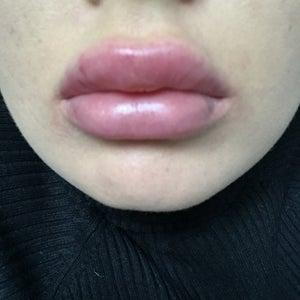
Swelling is one of the most common side effects after filler treatments. Fortunately, swelling is temporary and easily treated.
What are fillers?
Fillers such as Voluma, Vollure, and Volbella are products injected into the skin to restore volume. They are used in areas such as the cheeks, lips, smile lines (nasolabial folds), marionette lines, chin, jawline, temples, nose, and hands. Fillers such as Voluma, Vollure, and Volbella work by drawing water into your skin. This gives your skin volume that may have been lost naturally over time. The active ingredient in fillers such as Voluma, Vollure, and Volbella is a sugar called hyaluronic acid. Hyaluronic acids binds 1,000 times its weight in water, so it’s a perfect product for this purpose.
What causes swelling?
Swelling is one of the most common side effects of filler treatments. Swelling can be caused by any injection such as fillers or Botox. This is a normal reaction by your body that happens with other things such as cuts and burns. The other cause of swelling is from the hyaluronic acid in the filler. As mentioned above, hyaluronic acid draws water into the skin. When this happens, the area can swell up. This almost always happens immediately after the treatment. Swelling can also occur days, weeks, or months after a filler treatment. A common cause of such swelling is water retention. When you body retains water such as after eating salty foods, this extra water is naturally drawn to the hyaluronic acid from the filler. And this can cause swelling in the areas where you have had fillers. This doesn’t happen to everyone, but some people see this kind of swelling. In particular it is seen in the lips. A much less common cause of swelling can be seen when your body is producing an immune response to an infection or a vaccine (which prevents infections). When you have an infection or receive a vaccine, your body creates something called an immune response to fight the infection. Your body will naturally try to fight anything that is foreign such as a bacteria or virus. But sometimes your body identifies the filler as something foreign. When this happens, you may see swelling in the area that you’ve had filler placed. Another very uncommon cause of swelling is an allergic reaction to the product.
How is swelling treated?
Fortunately, swelling is almost always temporary and easily treated. Since it’s temporary, it will go away on its own if you do nothing. However, there are many things you can do to make the sweeling go away faster. Try to reduce the amount of blood flow to the area. This can be done by cooling the area with an ice pack or other cold compress. Cool the area for up to five minutes at a time since cooling longer can burn your skin. Do this several times a day. You can also reduce blood flow to the face overnight by sleeping on an extra pillow. When you lie flat overnight more blood (and water which is the main component of your blood) goes to your face. This is why swelling can sometimes be seen first thing in the morning. When you stand up, the swelling slowly goes away. Sometimes people’s bodies retain extra water. This is common after eating salty foods. When your body retains water, the hyaluronic acid in the filler attracts the water. This leads to swelling. Try to avoid salty foods for a few days after getting a filler treatment to avoid swelling. Also stay well hydrated by drinking plenty of water. This will flush out the salt from your system, which will in turn reduce the risk of swelling. If these things don’t help or don’t help enough you can try certain medications. Antihistamines such as Benadryl, Claritin, and Xyrtec can reduce swelling, often very quickly. But be careful since these medications can make you drowsy, especially Bendryl. So it’s best to take them at night and definitely don’t take them before you drive. If this doesn’t work, then you can ask your doctor for a prescription strength steroid such as a Medrol dose pack. This is a steroid that will reduce inflammation and swelling in your entire body. You will usually see improvement within a day. You start with the highest dose on the first day, and each day the dose is lowered slightly. This takes about five days. Dr. Alex doesn’t recommend taking a steroid when you have an infection or after getting a vaccine because the steroid can reduce the immune response in your body. Your immune system is responsible for getting rid of infections or to create antibodies that protect you after a vaccine. If you take a steroid at either of these times, it can prevent this and either make it harder for your system to fight the infection or make the vaccine less effective. If the swelling is caused by an allergic reaction it is usually painful and severe. The treatments above will help, but the product will need to be removed with hyaluronidase.
In summary, swelling is very common after filler treatments. There are many causes of swelling from fillers. But there are also many things you can do to treat swelling from fillers.
Dr. Alex has performed over 10,000 cosmetic treatments with many satisfied patients. Contact us to schedule an appointment for a free consultation with Dr. Alex in our Encino, CA office.

